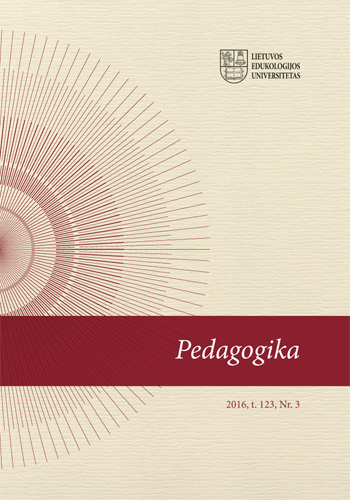Skaitmeninių žaidimų taikymo galimybės įgyvendinant dailės mokomojo dalyko Curriculum
Possibilities of the Application of Digital Games in the Implementation of the Curriculum of Arts Subject
Author(s): Birutė VitytėSubject(s): Education, Fine Arts / Performing Arts, ICT Information and Communications Technologies
Published by: Vytauto Didžiojo Universitetas
Keywords: digital games; teaching of art; curriculum of art; innovative learning/teaching tool;
Summary/Abstract: Digital games that involve entertainment, relaxation and technology are very attractive to modern students, while the traditional learning/teaching methods are inefficient and unattractive to them due to the change in learning habits. Surveys testify the successful incorporation of digital games into the curricula of Nature, Mathematics, Foreign Languages and other subjects and allow assuming that they might also be incorporated into the curriculum of the subject of Arts; therefore, this article investigates and reveals the possibilities of the application of digital games in the implementation of the curriculum of Arts subject. Many different interpretations of the concept of a digital game show that it is a manifold and multifaceted phenomenon. In addition to the concept of a “digital game” which can be understood in its broadest sense as the integration of technology and entertainment, the concepts of serious games, game-based learning / digital game-based learning, edutainment, and lecture games can also be encountered in the education contexts. Digital games can be incorporated into the subject of Arts first of all as a phenomenon of modern art. In certain aspects, digital games can be attributed to pop art and they have certain connections with installation art and, no doubt, with video and optic art and other art branches. The idea of digital games as a form of art is still questioned but some researchers suggest that their artistic value should be grounded on the analogy with art cinema. Cinema is undoubtedly considered a form of art although it is understood that not all films are works of art but, instead, an expression of the popular culture. Digital games can be incorporated into art classes as a means of artistic expression in several different ways. The first method is the creation of a digital game as an art object during art classes. The second method involves playing already created digital games as the tool/means of development of certain artistic expression abilities. Surveys show that children under 10 years of age are already capable of designing games: their script, graphics and other elements. Teenagers and older students are often capable of controlling programs intended for professionals. The process of creation of a digital game is analogous to the process of creation of any other art work but, according to the researchers, the nature of such creative work offers more education possibilities in certain aspects in comparison to traditional creative activities. The playing of digital games during art classes could be applied instead of traditional methods aiming to train the composing, designing and modelling abilities of the students or to deepen their knowledge on art history. Learning through digital gaming is an attractive and engaging experience to modern students who cannot learn and read consistently but are rather inclined to act and learn through experimenting; therefore, digital games can also be incorporated into art classes as a motivating element.
Journal: Pedagogika
- Issue Year: 123/2016
- Issue No: 3
- Page Range: 120-138
- Page Count: 19
- Language: Lithuanian

